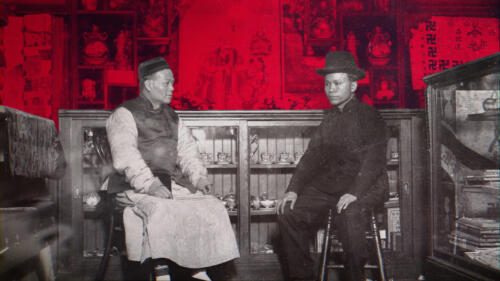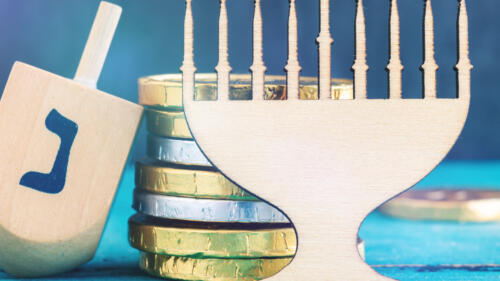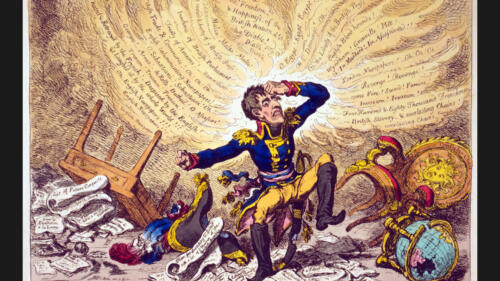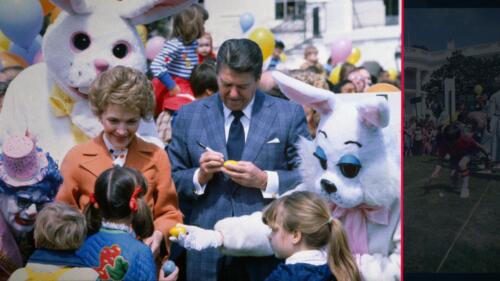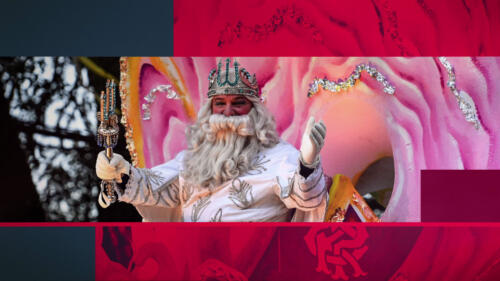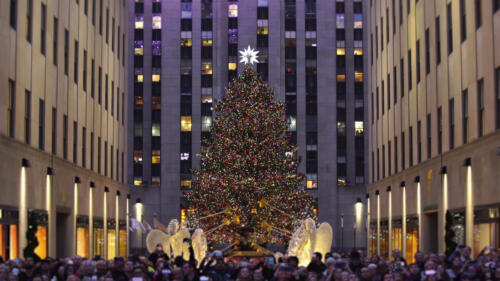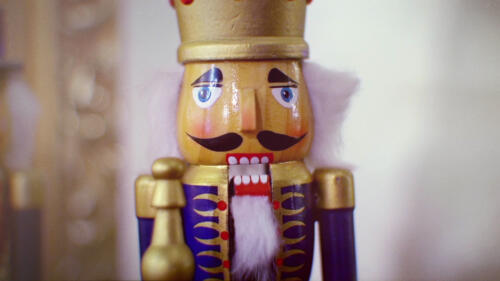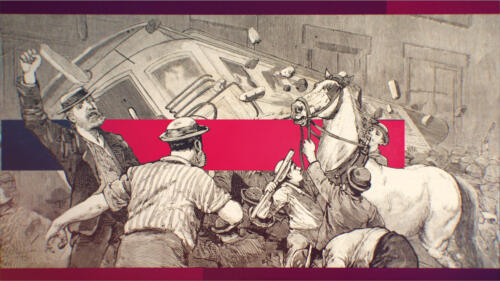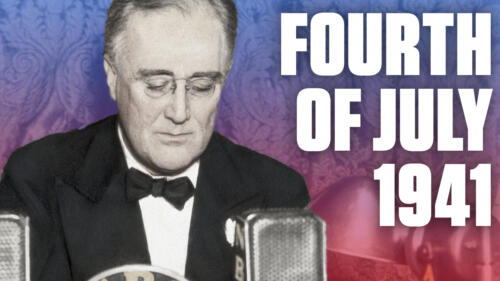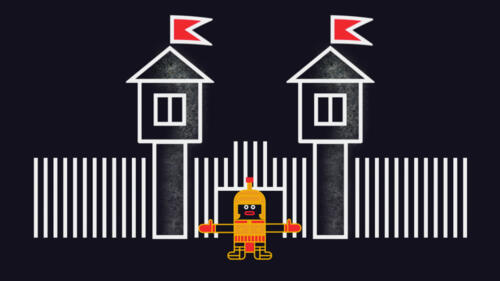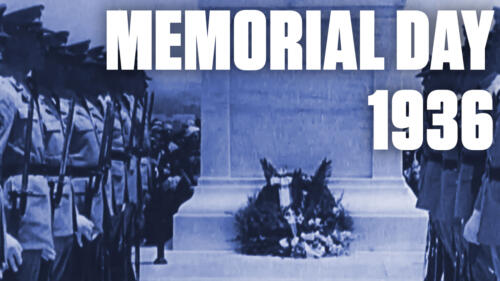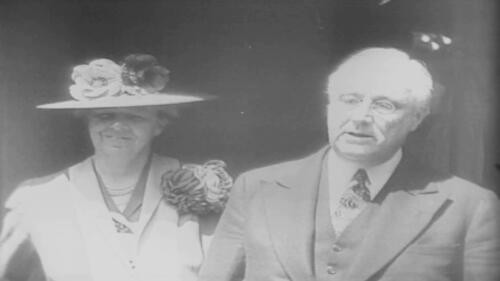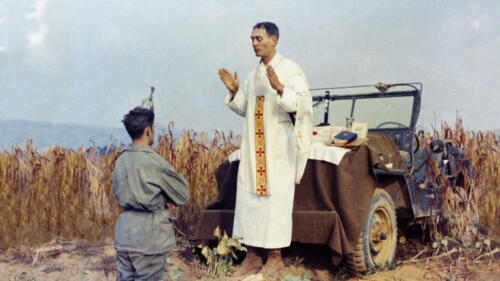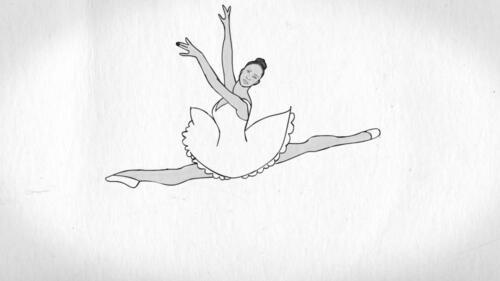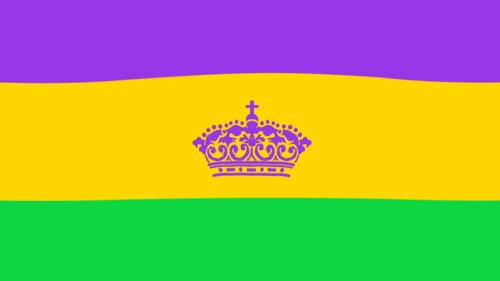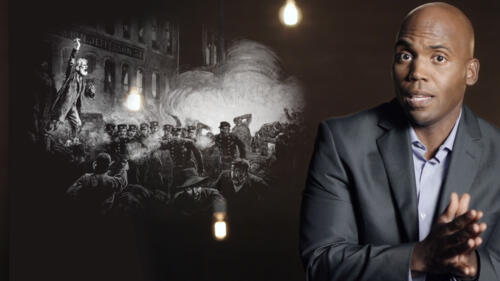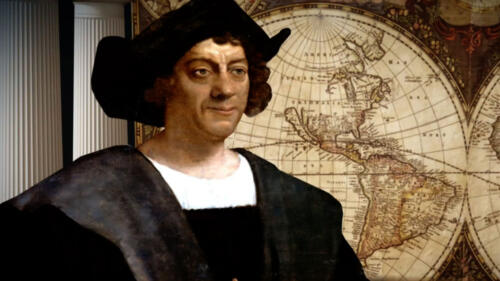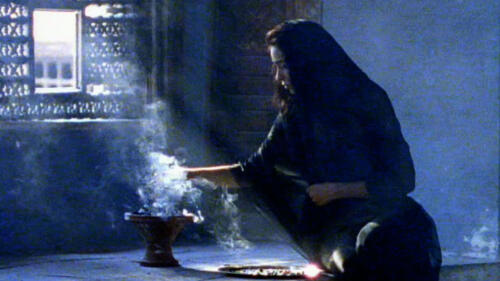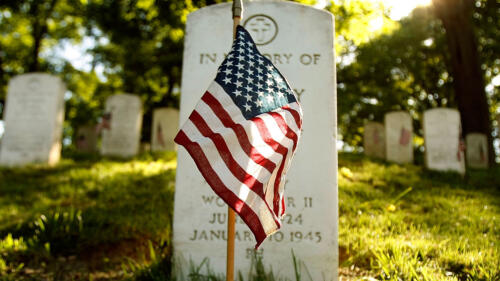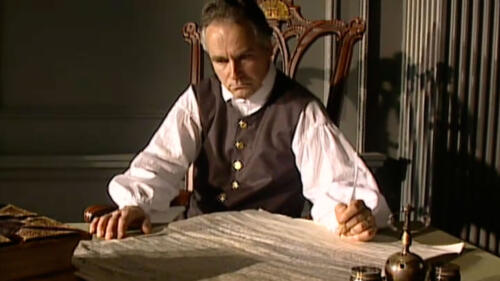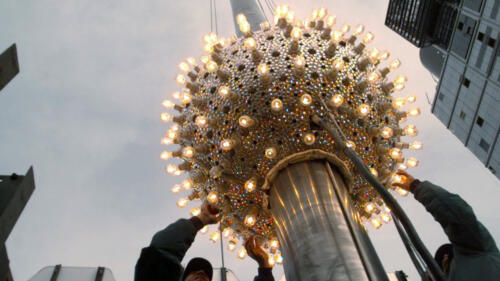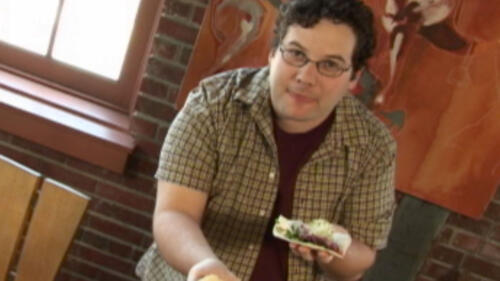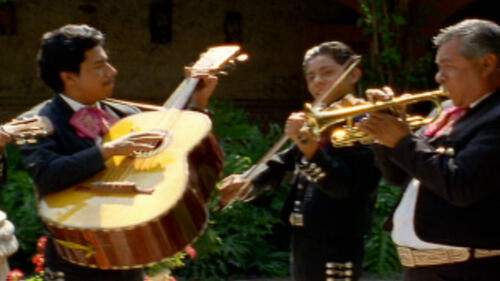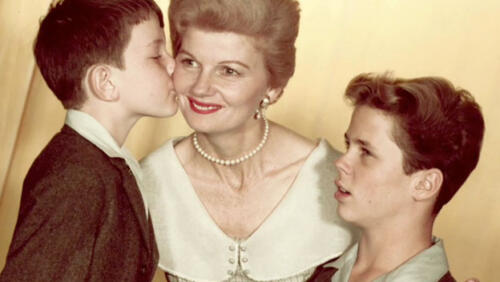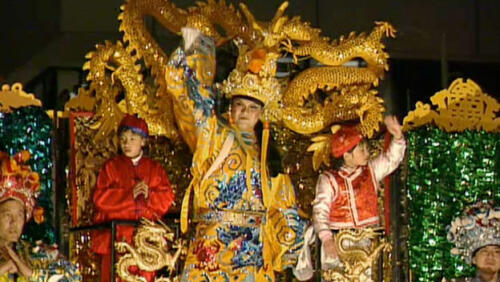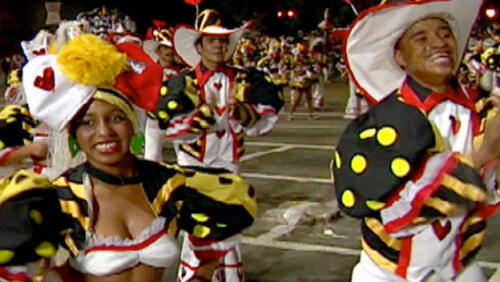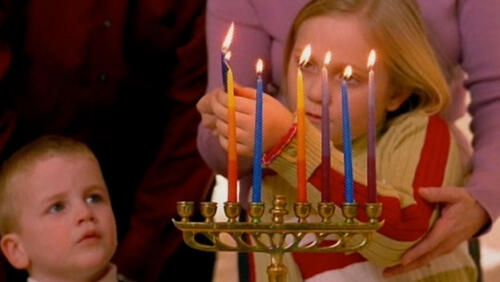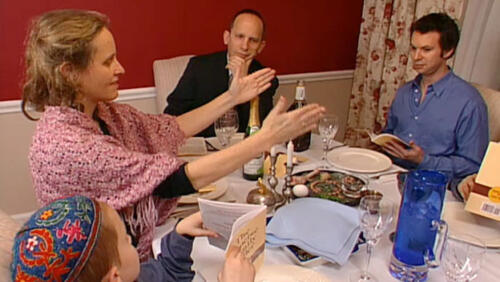Observances & Traditions
From religious and patriotic holidays to celebrations of ethnic pride, explore the history of Easter, New Year's Day, Veterans Day and more annual observances, plus traditions and rituals that take place all year long.
Featured Overview
Featured Overview
Environmental issues have long faced our planet, but what did it finally take to set aside a day just for Earth?
1:03m watch

Getty Images
Featured Overview
Featured Overview
Environmental issues have long faced our planet, but what did it finally take to set aside a day just for Earth?
1:03m watch
Start Here
Start Here

From spaghetti trees to a Nixon comeback, check out some of history’s most elaborate April Fools’ Day pranks.

Get the facts on the traditions of Ramadan and the significance behind the holiest month of the year for Muslims around the world.

The holidays both celebrate the resurrection of Jesus Christ, but have some different traditions and are based on different calendars.

The Independence Day tradition dates nearly as far back as the country's beginning and was proposed by one of the Founding Fathers.
Chinese New Year
Chinese New Year
Chinese New Year in San Francisco
New Year's celebrations in China are thousands of years old, but across the Pacific, the holiday took on a life of its own.
0:59 watch
3 Holidays Honoring U.S. Military Personnel
3 Holidays Honoring U.S. Military Personnel

Armed Forces Day
Celebrated annually on the third Saturday in May, Armed Forces Day thanks those currently serving in the military for their service. It was created in 1949 by then-Secretary of Defense Louis Johnson to replace separate Army, Navy and Air Force Days.
Explore All Related Topics
Explore All Related Topics

One famous festival began as a way to drive off angry spirits.

The elaborate celebration marks a girl’s coming of age.
Juneteenth celebrations are steeped in traditions, one being the consumption of red food and beverages.

For more than 50 years, the LGBTQ+ community has celebrated 'Pride' in June with parades, marches and events.

Mermaids, National Asteroid Day and the return of fireflies.

When did people start wearing them, and what’s with the tassel?

If you’ve ever received an anonymous flower basket at your doorstep on the first day of May, you may have been the recipient of a May Day basket.
Memorial Day's origins start in the years following the Civil War, founded by an army, but maybe not the one you'd expect.
1:00m watch

The holiday, which celebrates renewal and fertility, involves dancing with fire.

Maypole dances, celestial wonders and military campaigns.

For many Christians, sunrise and resurrection are linked.

Balancing eggs. Exploding snowmen. A serpent of light. Around the globe, spring’s arrival is celebrated with unique traditions.

March has long been unpredictable, from a blizzard with 50-foot snow drifts to a bizarre meat storm.

The completion of the transcontinental railroad drove synchronization of public clocks—and the start of celebrating at the stroke of midnight.

The pagan holiday of Yule was held during the darkest days of winter and marked the start of the return of light.

Many of the holiday songs played over and over each December were penned decades, or even centuries ago.

From eating red foods to promoting activism, Juneteenth traditions pay tribute to the liberation of America's enslaved.
Undeterred by his childhood disability, Henry Viscardi became one of the most effective advocates for disabled Americans in U.S. history.
1:02m watch

While specific traditions vary, nearly every country observes a day to honor mothers.

Purim is a joyful Jewish holiday commemorating the salvation of the Jewish people from a near massacre in ancient Persia, as recounted in the Book of Esther.

Nowruz is a 13-day festival marking the Persian New Year and the first day of spring. The holiday symbolizes renewal and harmony with nature.

Holi, often called the "festival of colors," is a vibrant Hindu celebration that marks spring’s arrival, the triumph of good over evil, and the love between Radha and Krishna.

Get the facts on the traditions of Ramadan and the significance behind the holiest month of the year for Muslims around the world.

Foods enjoyed during New Year are similar to those eaten throughout the year, but with special emphasis on bringing good fortune.

Did you know Rudolph's red nose was a recent invention? Plus more details behind the classic stop-motion productions by Rankin/Bass Productions.
New Year's celebrations in China are thousands of years old, but across the Pacific, the holiday took on a life of its own.
0:59m watch

From lighting a menorah, to giving out gelt, to eating cheese—find out how these Hanukkah traditions began.

Both honor U.S. military personnel—but the holidays arose for different reasons.

The holidays both celebrate the resurrection of Jesus Christ, but have some different traditions and are based on different calendars.

AANHPI Heritage Month is an annual celebration that recognizes the historical and cultural contributions of individuals and groups of Asian, Native Hawaiian and Pacific Islander descent to the United States.

The founder of the Red Cross dedicated her life to helping others and fighting for equality.

After a trolley car collided with a bus carrying the 18-year-old Mexican artist, pain and resilience emerged as perennial themes in her work.

From Queen Amanirenas to the Dahomey Amazons, women battled colonialists to maintain their power and prevent enslavement.

Many celebrate the Nativity—and the New Year—in festive, sometimes whimsical, ways.

Eid al-Adha, or the “Feast of Sacrifice,” is a Muslim holiday that signifies the willingness of the Prophet Ibrahim to sacrifice his son, Ismail as ordered by Allah.

The league was supposed to be temporary, but went on for 12 seasons.

From the start, the 39-time Grand Slam winner showed that she wasn’t just an ace on the tennis courts, but also in the long fight for gender equity.

Eid al-Fitr, or the “Festival of Breaking the Fast,” commemorates the end of the fasting month of Ramadan. An occasion for special prayers, family visits, gift-giving and charity, it begins on the first day of Shawwal, the 10th month in the Islamic calendar.
While Hanukkah is a religious holiday, its story is rooted in a violent conflict that was very real.
1:03m watch

Using fame as a cover, the glamorous entertainer spied for the French Resistance against the Nazis.

From black-eyed peas to lentils to soba noodles, these foods and others are believed to bring good luck in the new year.
From Napoleon's height to the birth of flight - lots of stories you were taught in school are not quite historically accurate. Follow along to find out ten things you learned in history class that were TOTALLY WRONG.
12:15m watch

On April 22, 1970, a nationwide “teach-in” inspired millions of Americans to care more about the environment.

More than a century ago, recycling wasn't a thing, but people did it instinctively.
The Easter Egg Roll is an annual White House tradition dating back over a century, but how did presidents start hosting this egg racing ritual?
1:00m watch
New Orleans is known for its Mardi Gras celebrations, but its history is much more mysterious than you might think.
1:01m watch
Electric lights have been a holiday spectacle for generations, and the first ones actually came from the inventor himself, Thomas Edison.
1:01m watch

From carving menorahs on stolen blocks of wood to creating makeshift wicks from scraps of fat and used loose threads, concentration camp inmates devised covert ways to celebrate the holiday.
We all watch the ball drop on New Year's Eve, but the ball has its own history that began well before Times Square.
1:01m watch
Wooden nutcracker soldiers are staples of the holiday season, but what do they actually have to do with Christmas celebrations?
1:02m watch
Historian and author Don Miller discusses the importance of Veterans Day.
1:02m watch

Tens of millions of Americans have served in the armed forces since the country’s founding. Read quotes by and about U.S. servicemembers.

Christopher Columbus' arrival in North America in 1492 undoubtedly changed the world and lives of the Indigenous people he met. But was it for the better?

When the federal government was called in to suppress a railroad workers' strike, dozens were killed and politicians sought a way to show they still supported workers.
Labor Day in the United States actually started across the border in Canada, after a struggle involving newspaper printers, outdated laws, and political rivalries.
1:02m watch

The Independence Day tradition dates nearly as far back as the country's beginning and was proposed by one of the Founding Fathers.

At the close of the Civil War, people recently freed from slavery in Charleston honored fallen Union soldiers.

When a small, scrappy Mexican force handed the French army a surprise defeat in 1862, the Confederacy was denied a potential ally.

In 1957, a TV broadcaster shared footage of harvesting "an exceptionally heavy spaghetti crop" in a town near the Italian border. Try to top that—and other historic, outrageous pranks—this April Fools' Day.

Some claim the earliest Mardi Gras celebration was in Mobile, Alabama, not New Orleans, but it depends on a few technicalities—and who's answering the question.

President Nixon's 'Honor America Day' featured the Rev. Billy Graham and Bob Hope in an Independence Day event that critics saw as a pro-Vietnam War rally.

During a time when women's education was not a priority, convents became centers for learning.

On July 4, 1826, two prominent presidents, Thomas Jefferson and John Adams, took their final breaths within hours of each other. Some have wondered if it was somehow planned.
As World War II raged in Europe and North Africa, the United States celebrated its Independence Day in July 1941. It was looking increasingly likely that the U.S. would enter the war, and President Franklin Roosevelt delivered an address that equivocated America's own struggle for freedom in the 1700s with the struggle faced by her allies overseas.
1:49m watch

William Jackson Smart was a twice-married, twice-widowed father of 14 children.

Discover the history of the annual holiday and check out 13 facts about the American flag and how to properly display it.
In ancient China, the goal was a hole in the net. In ancient Rome, it was the gates of a fort. Discover how the soccer goal has evolved over the centuries, in this brief history of the goal posts.
0:51m watch
In the shadow of Hitler's rise to power, Americans observe Memorial Day in 1936 with a sense that another worldwide conflict might be on the horizon. General John Pershing, who led America's forces during WWI, argues that peace should be sought at any cost.
1:24m watch

Samhain is a pagan religious festival originating from an ancient Celtic spiritual tradition. In modern times, Samhain (a Gaelic word pronounced “sow-win”) is usually celebrated from October 31 to November 1 to welcome in the harvest and usher in “the dark half of the year.”

Imbolc is a pagan holiday celebrated from February 1 to 2. Based on a Celtic tradition, it’s the halfway point between winter solstice and the spring equinox.

Despite the ongoing global conflict, Americans still took the time to celebrate Easter in 1941.
1941's Easter celebrations would be the last before the United States officially entered WWII. It was a time to celebrate peace, even under the specter of global war. This episode of Flashback takes a look at how the U.S. celebrated Easter during a time of conflict.
1:57m watch

'Well-behaved women seldom make history.'

The surprising maritime origins of New Year’s Eve’s biggest party.

Seasonal greetings have never been so controversial.

A soldier describes the 5 steps of veteran transition.
Father Emil Kapaun gave his life during the Korean War, but his selfless faith saved and inspired his fellow soldiers. President Obama recognized the Army chaplain with the Medal of Honor in 2013.
4:02m watch

Silas Weir Mitchell specialized in the ghostly pain that lingered after amputations.

World War II veteran Richard Overton enjoyed his whiskey and cigars until the end.

Indigenous Peoples’ Day celebrates the history and contributions of Native Americans and has been federally recognized since 2021.

Robert Propst’s invention was designed to improve life for workers.

The Remembrance Day symbolism of the poppy started with a poem written by a World War I brigade surgeon who was struck by the sight of the red flowers growing on a ravaged battlefield.

May Day is a May 1 celebration with a long and varied history. Along with marking a change of season, it is also recognized as International Workers' Day.

Arbor Day is a holiday that celebrates the planting, upkeep and preservation of trees. It is celebrated each year in April.
Katherine Switzer was the first woman to run the Boston marathon in 1967. Take a look back at her accomplishment and those of other record-busting female sports stars.
1:19m watch

April Fools' Day, sometimes called All Fools' Day, has been celebrated for several centuries by different cultures. Its exact origins remain a mystery. People celebrate by playing practical jokes and pranks.
Celebrate the progress and accomplishments of American women with this look at trailblazers throughout history. Are you next?
1:19m watch

Though International Women’s Day may be more widely celebrated abroad than in the United States, its roots are planted firmly in American soil.
How long does Mardi Gras last? How many beads get thrown every year? Learn the facts and figures behind the big festivities in the Big Easy.
1:37m watch

Since long before recorded history, the winter solstice and the subsequent “return” of the sun have inspired celebrations and rituals in various societies around the world.

The British Commonwealth holiday, typically celebrated on December 26, has nothing to do with fisticuffs.

Think the office holiday party got a little out of control? That was nothing compared to the alcohol-fueled Christmas celebration at West Point 190 years ago that turned into a riot.
Learn the facts and figures behind the many contributions of America's armed forces throughout the country's history.
2:16m watch
Historian Yohuru Williams gives a crash course on a riot in Chicago's Haymarket Square that changed the labor movement in the United States.
1:52m watch

No one can seem to agree.

A group of hard-boiled congressmen literally protecting their turf got the annual Easter tradition rolling.

The custom of making New Year’s resolutions has been around for thousands of years, but it hasn’t always looked the way it does today.

Ebenezer Scrooge and the Grinch had nothing on the 17th-century Puritans, who actually banned the public celebration of Christmas in the Massachusetts Bay Colony for an entire generation.

The eight-day Festival of Lights marks an event dating to the second century B.C.E.

Meet eight real-life Yankee Doodle Dandies who share a July 4th birthday with the United States.

The idea dates back to 1895—and has been controversial ever since.

Explore the history behind six of the most famous Mardi Gras traditions, New Orleans-style.

The extra day tacked on to every fourth year is a subtle admission that even something as regular and simple as a calendar can be more complicated than we think.
How did practical jokes become associated with April 1? Ask HISTORY has the answers.
2:35m watch

The summer solstice was a day of great significance for many past civilizations.

From its Civil War origins to its modern-day traditions, find out more about America’s most solemn holiday.

Anna Jarvis, who founded Mother's Day in 1908, passionately opposed its growing commercialization and eventually campaigned against the holiday.

From spaghetti trees to a Nixon comeback, check out some of history’s most elaborate April Fools’ Day pranks.

The plain Passover flatbread known as matzo shows its sweeter side.

Check out some facts about the raucous annual affair.

Check out eight facts about how the Lunar New Year is celebrated in China.

Get the facts on the ways 5 ancient civilizations rang in the New Year.

In the Southern United States, hoppin’ John—a simple, delicious dish of peas, pork and rice—is standard New Year’s fare.

The pan-African holiday is celebrated by millions around the world.
Did Columbus really discover America? Get the full story.
2:08m watch

The British holiday, celebrated with fireworks and bonfires, commemorates the failed Gunpowder Plot of 1605.
Ramadan is the most holy Islamic holiday.
2:54m watch
Join host Famous Fat Dave as he tries to unlock the mystery of Cinco de Mayo's most unusual food Mole Poblano.
3:01m watch
Take a look at the holiday honoring America's fallen heroes.
3:20m watch
Discover how and when Americans celebrated Independence Day in the past.
2:44m watch
The new year countdown in Times Square includes the iconic ball drop and attracts millions of people from around the world each year.
3:28m watch
Rosh Hashanah is the first of ten Jewish high holy days ending with Yom Kippur.
2:47m watch
Scenes from the most important Islamic ceremony marking the end of Ramadan at the Woking Mosque in Surrey, England.
0:57m watch
What is Rosh Hashanah? History.com's Ask a Rabbi series describes and defines this most important Jewish Holiday. Learn about the customs associated with Rosh Hashanah including the blowing of the ram's horn.
3:15m watch
Veterans Day has changed days and names but it has always been a day to honor those who serve their country.
3:19m watch
Watch as Famous Fat Dave dyes some Easter Eggs and then gets creative with the leftovers.
3:48m watch
Ancient Babylonians first celebrated the new year over 4,000 years ago.
3:30m watch
Join Famous Fat Dave as he interviews a cook who knows how to make a great taco for Cinco de Mayo.
3:32m watch
Cinco De Mayo commemorates the Mexican Army's successful defense of the city of Puebla against invading French forces in 1862.
3:09m watch
Find out about the ancient roots and modern history of Mother's Day.
2:52m watch
The 15-day long Chinese New Year celebration originated from an ancient Chinese legend of the monster Nian.
3:31m watch
Find out more about the history of Mardi Gras, also known as Fat Tuesday, and how the holiday came to be synonymous with New Orleans.
3:29m watch
Hanukkah celebrates the triumph of Jewish people over religious persecution.
3:40m watch
New Year's Day often includes a feast of foods to symbolize health, luck and prosperity in the coming year.
3:12m watch
A brief look at the history of Passover
3:59m watch
Discover the roots of Kwanzaa and how it became an African American holiday.
3:44m watch
A look at the origins of the holiest day on the Christian calender.
3:32m watch
In this History of the Holidays video, learn the origin of one of Easter's most elegant decorations, the Faberge egg. The first Faberge egg, or imperial egg, was requested by Czar Alexander III as an Easter gift for his wife, Czarina Maria.
3:04m watch

The annual Mexican holiday marks the anniversary of the Battle of Puebla.

The idea has nothing to do with farmers, for one thing.

In honor of Presidents’ Day, here’s a look at some unusual ways the commanders-in-chief have spent their special day.

Explore Groundhog Day's shadowy history as well as interesting facts about the custom.

Today is National Handwriting Day, a time for acknowledging the history and influence of penmanship.

From the origins of "Auld Lang Syne" to traditional foods, find out more about the history of New Year's Eve and New Year's Day.

Find out about the history of fireworks, which will light up the skies across America this Independence Day.

This Father’s Day, we bring you five men who exemplify some of history’s finest parenting—along with five others you’ll be glad you never had to call Dad.

Mother’s Day is observed in different forms around the world.

Earth Day was established in 1970 and has become a worldwide holiday celebrated by over 1 billion people. See key highlights in the movement.

Ramadan is a holy month of fasting, introspection and prayer for Muslims worldwide. It is usually commemorated around April or May.

Presidents' Day is an American holiday celebrated on the third Monday in February. Originally established in 1885 in recognition of President George Washington, the holiday became popularly known as Presidents' Day and is now viewed as a day to celebrate all U.S. presidents.

Labor Day became a federal holiday in 1894, under President Grover Cleveland. Cleveland created the holiday during a crisis over federal efforts to end a strike by railroad workers. Today the holiday—celebrated on the first Monday in September—pays tribute to the contributions of American workers and symbolizes the end of summer.

The Tallest Menorah According to the Code of Jewish Law, menorahs can be a maximum of 20 cubits high (each cubit equals 18 inches), yet several organizations claim to have lit “The World’s Largest Menorah.” Who is the true winner? While no one has creat...

Most New Year’s festivities begin on December 31 (New Year’s Eve), the last day of the Gregorian calendar, and continue into the early hours of January 1 (New Year’s Day). Common traditions include attending parties, eating special New Year’s foods, making resolutions for the new year and watching fireworks displays.

Chinese New Year is the most important holiday in China. Tied to the Chinese lunar calendar, it begins on the new moon that appears between January 21 and February 20. The holiday was traditionally a time to honor household and heavenly deities as well as ancestors.

Dough Ingredients: 4 packages active dry yeast 1/2 cup lukewarm water (110-115 degrees F) 1/2 cup granulated sugar 1 tablespoon salt 1/2 cup cold milk 1 cup plain or vanilla yogurt 2 teaspoons lemon juice 1 teaspoon vanilla extract 2 egg yolks, lightly ...

Mardi Gras is a Christian holiday and popular cultural phenomenon that dates back thousands of years to pagan spring and fertility rites. It's most famously celebrated with parades in New Orleans, Louisiana.

Columbus Day is a U.S. holiday that commemorates the landing of Christopher Columbus in the Americas in 1492.

Women’s History Month is a celebration of women’s contributions to history, culture and society and has been observed annually in the month of March in the United States since 1987.

Father’s Day is a holiday honoring fathers, celebrated in the United States on the third Sunday in June. It was first celebrated on June 19, 1910, in the state of Washington, but didn’t become an official nationwide holiday until 1972.

The Fourth of July—also known as Independence Day or July 4th—has been a federal holiday in the United States since 1941. The tradition of Independence Day celebrations goes back to the 18th century and the American Revolution.

In Judaism, Passover commemorates the story of the Israelites’ escape from slavery and departure from ancient Egypt, which appears in the Hebrew Bible’s books of Exodus, Numbers and Deuteronomy, among other texts.

Yom Kippur—the Day of Atonement—is considered the most important holiday in the Jewish faith. Falling in the month of Tishrei (September or October in the Gregorian calendar), it marks the culmination of the 10 Days of Awe, a period of introspection and repentance that follows Rosh Hashanah, the Jewish New Year.

Rosh Hashanah, the Jewish New Year, is one of Judaism’s holiest days. It falls in September or October.

Earth Day was founded in 1970 as a day of education about environmental issues and the holiday is now a global celebration that’s sometimes extended into Earth Week, a full seven days of events focused on green living and confronting the climate crisis.

Easter is a Christian holiday that celebrates the belief in the resurrection of Jesus Christ from the dead. Although a holiday of high religious significance in the Christian faith, many traditions associated with Easter date back to pre-Christian, pagan times. Learn how Easter eggs and the Easter Bunny fall into the holiday.

Memorial Day, observed on the last Monday of May, honors the men and women who died while serving in the U.S. military.

Hanukkah (or Chanukah) is the eight-day Jewish celebration that commemorates the rededication during the second century B.C. of the Second Temple in Jerusalem, where according to legend Jews had risen up against their Greek-Syrian oppressors in the Maccabean Revolt.

The most prominent secular symbol of the Christian holiday, the Easter bunny was reportedly introduced to America by German immigrants. Learn about other symbols and traditions like the Eager egg, Easter candy, Easter lilies and Easter parades.

Chinese New Year is a festival that celebrates the beginning of the new year in China. The celebration usually starts around late January or early February, and lasts 15 days.

Cinco de Mayo celebrates Mexico's 1862 victory over France.

Kwanzaa is a week-long secular holiday which culminates on New Year's Day. Founded in 1966, Kwanzaa combines aspects of several African harvest celebrations.

Veterans Day originated as “Armistice Day” on November 11, 1919, the first anniversary of the end of World War I. Congress passed a resolution in 1926 for an annual observance, and November 11 became a national holiday beginning in 1938.

Veterans Day is a U.S. public holiday honoring military veterans that is observed annually on or around November 11.








